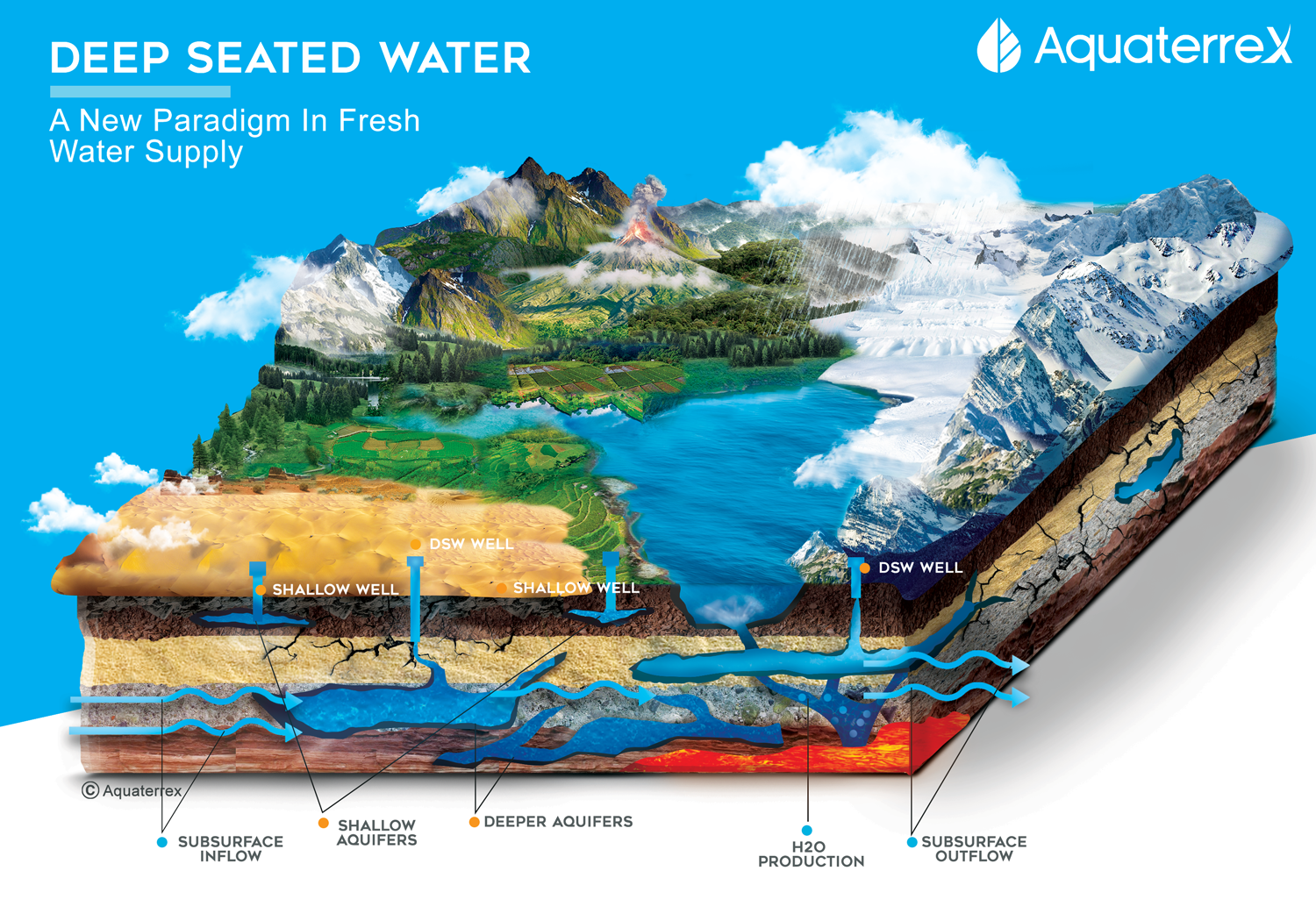
Groundwater Extraction Alters Earth’s Tilt!
Another Scare – Human Activity Impacts Polar Drift
This week, media outlets pumped out another dire warning about climate change. This time, it’s that withdrawal of groundwater for irrigation and human consumption has altered the Earth’s tilt. Over a 17-year period between 1993 and 2010, the extraction of groundwater by humans has caused the Earth’s poles to shift 80 centimeters (about 31.5 inches). Of course, the Earth has been wobbling like a top for millions of years, “tracing out a roughly 10-meter-wide circle every year or so.” The scientists involved admitted that the extra wobble from this finding is too small to affect weather or seasons, but the underlying haunting message is inescapable. Ki-Weon Seo, a geophysicist at Seoul National University and the study’s lead author, also says it offers a way to check how much sea level rise is caused by groundwater pumping. Their findings: over 17 years groundwater depletion added approximately 6 millimeters (less than ¼ inch) to sea level rise. Science Advisor article
Perhaps I have become somewhat skeptical after twenty years in and around the climate debate, but these types of headlines simply fan the flames of a coming climate apocalypse. The minuscule changes cited in this report seem more like background noise. I am sure the measurements are accurate, but I wonder whether all of the factors have been considered. For example, in agricultural irrigation groundwater is extracted but then used in the same location for crops and livestock. It is rarely transported far away, and thus it returns to the earth in that same location. True, the water grows crops and transpiration occurs (water is “exhaled” by plants) which is then absorbed into the atmosphere (much of it returning to the earth as well). And yes, some 2150 gigatons of groundwater was extracted during this period which can influence the “weighting” of the earth’s mass, but as seen above, at a tiny level.
As for the rising of sea levels by ¼ inch in 17 years, I doubt the study encompasses the huge amount of sea water that is being removed from the oceans by over 18,000 desalination plants operating in 177 countries. A rough calculation of the volume of sea water removed would easily compensate for the 6 mm rise.
The point is studies like these are important to help understand the forces that impact our planet. However, the underlying implication that extracting and using groundwater to grow food and supply populations is a bad thing is a conclusion we need to avoid.
Emphasizing Effective Water Management
Rather than solely focusing on the potential negative implications of groundwater extraction, it is crucial to underscore the importance of responsible water management. This requires a concerted effort to address challenges related to water scarcity, contamination, and drought through scientific advancements, innovative technologies, and political will.
The Challenge of Water Availability
Contrary to popular belief, there is an abundance of fresh water on Earth. With the aid of new technologies and best management practices, it is possible to meet the planet’s water needs sustainably.
The US National Groundwater Association estimates there are 6,000 years of freshwater supply in the upper two kilometers of the earth’s crust Nature Geoscience article. AquaterreX has developed the ability to locate and economically bring to the surface these previously untapped water resources.
Recommending Deep Seated Water as a Solution
Deep Seated Water (DSW) is an alternative and clean source of groundwater derived from deep aquifers. These aquifers receive supply not only from local catchment basins but also from subsurface inflows across basin boundaries. DSW is not subject to contamination due to its depth, making it an attractive solution to the water crisis. Its accessibility and abundance offer an additional fresh water source that can complement existing strategies, promoting environmental sustainability and resilience.
The Missing Piece to Resolving the Water Crisis
Deep Seated Water holds the key to unraveling the complex water crisis, encompassing issues of contamination, drought, and scarcity. While many water conservation strategies have been employed, they often overlook the importance of augmenting the water supply. Alternatives like desalination and wastewater treatment have shown promise for some, but they bring along drawbacks such as exorbitant costs, extensive energy consumption, prolonged planning periods, and hazardous waste production. Deep Seated Water, on the other hand, presents a nearly ubiquitous solution that can supplement fresh water resources without being susceptible to contamination. Its implementation is swift and uncomplicated, offering economic viability and scalability. Furthermore, harnessing Deep Seated Water facilitates the recharge of both surface water and shallow aquifers, resulting in a more sustainable and holistic water management system.
The Science and Innovation are Here Now
Advancements in technology have revolutionized groundwater exploration. Using a combination of geologic, hydrologic data sets, plus satellite imagery and underground survey instrumentation, a company like AquaterreX can pinpoint groundwater, including depth, flow rate, and whether the water is fresh or saline. 3D models can be created, and precise readings can pinpoint a location for a well with near-100% accuracy.
A Sustainable and Secure Future for our Water Resources
Here we have reviewed a more nuanced perspective on the impact of groundwater extraction on Earth’s dynamics. While the study’s findings indicate minor changes, it is essential to consider various factors involved and acknowledge the complex nature of groundwater usage. Effective water management, alongside innovative solutions like Deep Seated Water, will play a vital role in addressing the global water crisis. By combining scientific advancements with responsible practices, we can ensure a sustainable and secure future for our water resources and the well-being of humanity.
About AquaterreX
AquaterreX (www.AquaterreX.com) is a global environmental services organization with a mission to broadly implement effective water and food security solutions. The name AquaterreX comes from the Latin, aqua (water) and French, terre (earth, land) which is a derivative of the Latin, terra, and “X” for exploration. Thus, AquaterreX encompasses water and land solutions for the planet.
